 This spring, one of the Richmond Physics faculty, Jerry Gilfoyle had his US Department of Energy research grant renewed. Dr. Gilfoyle studies nuclear physics at Jefferson Lab, a large national accelerator lab in Newport News, VA. Dr. Gilfoyle’s work is focused on understanding how the strong force binds quarks together in protons, neutrons, and atomic nuclei. The grant will provide funds for summer stipends for Richmond undergraduates to study nuclear physics under Dr. Gilfoyle’s guidance. A supplement to the original proposal was also approved and will provide funding for a masters student to study with Dr. Gilfoyle in 2013 as part of a joint program between the University of Richmond and the University of Surrey in the UK.
This spring, one of the Richmond Physics faculty, Jerry Gilfoyle had his US Department of Energy research grant renewed. Dr. Gilfoyle studies nuclear physics at Jefferson Lab, a large national accelerator lab in Newport News, VA. Dr. Gilfoyle’s work is focused on understanding how the strong force binds quarks together in protons, neutrons, and atomic nuclei. The grant will provide funds for summer stipends for Richmond undergraduates to study nuclear physics under Dr. Gilfoyle’s guidance. A supplement to the original proposal was also approved and will provide funding for a masters student to study with Dr. Gilfoyle in 2013 as part of a joint program between the University of Richmond and the University of Surrey in the UK.
Category: Research
Summer Research Students visit Jefferson Lab
A group of five Richmond physics students went on a tour of the Thomas Jefferson National Accelerator Facility (Jefferson Lab or JLab) in Newport News, VA in July. The tour was led by one of the Richmond Physics faculty, Jerry Gilfoyle, whose research is focused on the program in Hall B at JLab. Three of the Richmond students (Keegan Sherman, Liam Murray, and Spencer Bialt) are doing nuclear physics this summer with Dr. Gilfoyle. Jocelyn Xue and Rob Lee also went along. They are doing cosmology research this summer with Ted Bunn.
JLab is built around a mile-long electron accelerator (CEBAF) that can accelerate electrons up to energies of 6 GeV. The beam is then directed into one of four end stations. The group started in Hall B which holds one of the large particle detectors called CLAS. CLAS is a large, spherical, magnetic spectrometer about 10 m in diameter. It surrounds the target so nearly all of the debris from a collision with the electron beam is detected. The goal of the science at JLab is to uncover the secrets of the strong force that binds quarks together to form protons, neutrons, and, in turn, atomic nuclei. That force is described by a theory, quantum chromodynamics (QCD), that has been highly successful at higher energies and should work at JLab energies, but until now the theory has not been solved. With JLab we hope to challenge theory with new data on nucleon and nuclear structure.
The group started in Hall B. The first picture below shows them standing on the forward carriage that holds some of the CLAS components. The main part of the CLAS can be seen to the right.
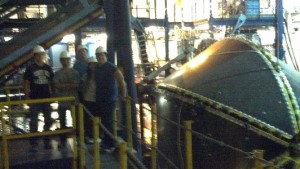
The second picture below shows the group now at the point where the beam enters the detector. Normally a vacuum pipe carrying the beam would go through the middle of the picture and enter the round opening behind them. In a real experiment, that opening would be filled by a target.
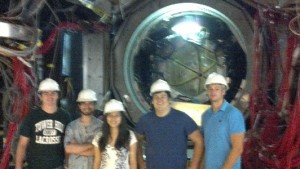
The last shot below shows them later in the accelerator tunnel. The JLab electron beam is accelerated by superconducting cavities that have a rapidly changing electric field and form a racetrack shape about a mile around. Individual electrons injected into the machine can make up to five laps before being extracted and sent into one of the end stations. The shot below shows one of the large cryomodules at lower left that hold the cavities. A string of cryomodules form a long chain that extends down the tunnel behind the group.
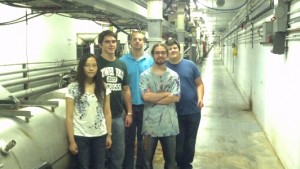
Chris Musalo presents his research in nuclear physics at national meeting.
Chris Musalo, a senior physics major, recently traveled to East Lansing, Michigan for the 2011 meeting of the Division of Nuclear Physics. He was part of the Conference Experience for Undergraduates and presented his poster entitled ‘Simulation of the CLAS12 Dual Hydrogen‐Deuterium Target’ on October 27. His poster is here. Part of his travel costs were paid by the American Physical Society.
Grad School Plans
A horde of recent physics grads are headed to graduate school in physics and related fields. Calina Copos and Brent Follin (class of 2010) are headed to doctoral programs on the left coast and the University of California at Davis. Calina will be doing computational physics and Brent will study cosmology. Jeff Zheng will stay on the right coast and also study cosmology. He will be at MIT. Mark Moog has been admitted to the physics program at the University of North Carolina and will be working on nuclear physics at TUNL, a nearby accelerator facility. Finally, Bernard Wittmaack will be staying a bit closer to Richmond. He will be pursuing his PhD in materials science and engineering at the University of Virginia.
Two students present research at national physics conference
Sophomore Nathan Follin and junior Chris Musalo traveled with professor Matt Trawick to Dallas, Texas, to present their research at the annual March meeting of the American Physical Society. Approximately 5000 physicists from around the world convened there for the five day conference. Nathan and Chris presented a new technique in atomic force microscopy that enables topographical imaging with nanometer scale accuracy. The two did their work using the University of Richmond Physics Department’s state of the art atomic force microscope.
Research Update: Mark Moog '11
 Senior Mark Moog is part of a team that is preparing for the “12 GeV Upgrade” at the Thomas Jefferson National Accelerator Facility in Newport News. The upgrade is a $300 million project at Jefferson Lab to explore new territory within the atomic nucleus. Mark has been performing sophisticated simulations of a new detector which will be used in experiments to measure the internal structure of the neutron, a project lead by professor Jerry Gilfoyle. Mark traveled to Santa Fe, NM, this fall to present his work at the fall meeting of the Division of Nuclear Physics of the American Physical Society.
Senior Mark Moog is part of a team that is preparing for the “12 GeV Upgrade” at the Thomas Jefferson National Accelerator Facility in Newport News. The upgrade is a $300 million project at Jefferson Lab to explore new territory within the atomic nucleus. Mark has been performing sophisticated simulations of a new detector which will be used in experiments to measure the internal structure of the neutron, a project lead by professor Jerry Gilfoyle. Mark traveled to Santa Fe, NM, this fall to present his work at the fall meeting of the Division of Nuclear Physics of the American Physical Society.
Jeff Zheng '11 publishes cosmology paper
Senior 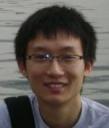 Jeff Zheng recently published a paper in the prestigious journal Physical Review D presenting the results of cosmology research performed with Professor Ted Bunn. Jeff’s work involved the examination of maps of the cosmic microwave background radiation (the oldest light in the Universe). These maps appear to contain certain unexpected patterns, which may provide clues about the nature of the early Universe. Jeff analyzed the patterns to assess whether certain “exotic” variations on the standard Big Bang model might explain their presence.
Jeff Zheng recently published a paper in the prestigious journal Physical Review D presenting the results of cosmology research performed with Professor Ted Bunn. Jeff’s work involved the examination of maps of the cosmic microwave background radiation (the oldest light in the Universe). These maps appear to contain certain unexpected patterns, which may provide clues about the nature of the early Universe. Jeff analyzed the patterns to assess whether certain “exotic” variations on the standard Big Bang model might explain their presence.
Richmond students do research at national accelerator facility
Three Richmond physics students are currently working with professor Jerry Gilfoyle on nuclear physics experiments at the Thomas Jefferson National Accelerator Facility (Jefferson Lab) in Newport News. From left to right are junior Chris Musalo, senior Mark Moog, and junior Josh Carbonneau in the Machine Control Center there; the displays behind them are used to monitor the functioning of the accelerator during experiments. All three also traveled to Santa Fe, NM, this fall to present their work at the meeting of the division of nuclear physics of the American Physical Society.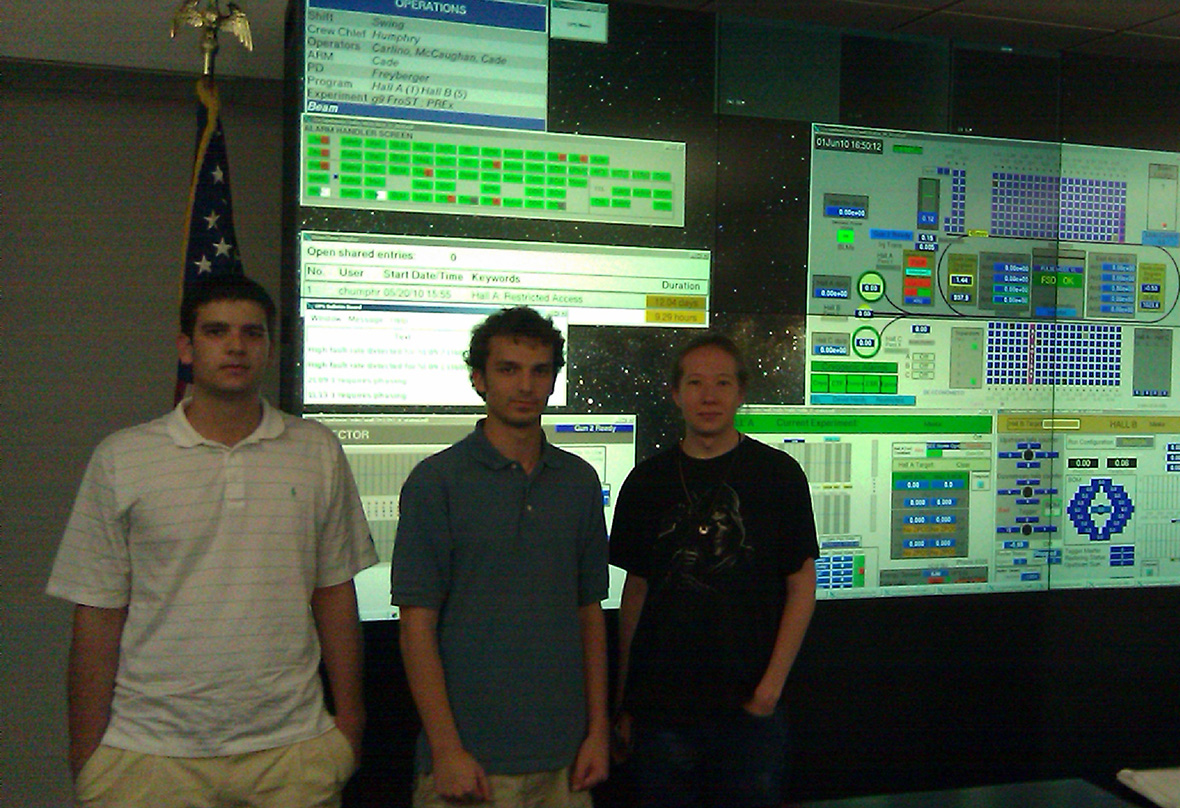
Nathan Follin '13 to present research in Dallas
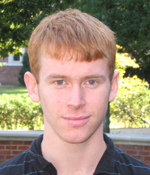 Sophomore Nathan Follin will travel to the annual March meeting of the American Physical Society in Dallas, TX, this spring to present the results of his research with physics professor Matt Trawick. Nathan has helped develop a new atomic force microscope technique for producing topographical images with nanometer scale accuracy. The two began working together in the summer before Nathan’s freshman year; they expect to publish a paper on their work soon.
Sophomore Nathan Follin will travel to the annual March meeting of the American Physical Society in Dallas, TX, this spring to present the results of his research with physics professor Matt Trawick. Nathan has helped develop a new atomic force microscope technique for producing topographical images with nanometer scale accuracy. The two began working together in the summer before Nathan’s freshman year; they expect to publish a paper on their work soon.
Research Update: Nick Annichiarico '12
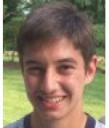 Junior Nick Annichiarico is working with professor Ted Bunn on a project to look for large-scale patterns in the orientation of galaxies. Standard theory predicts that the Universe is expanding in the same way at all locations and in all directions. If this is correct, galaxies should be oriented at random. Looking for departures from randomness is a good way to test whether our understanding of the uniform expansion is correct. Nick’s work will be presented at an upcoming meeting of the American Astronomical Society.
Junior Nick Annichiarico is working with professor Ted Bunn on a project to look for large-scale patterns in the orientation of galaxies. Standard theory predicts that the Universe is expanding in the same way at all locations and in all directions. If this is correct, galaxies should be oriented at random. Looking for departures from randomness is a good way to test whether our understanding of the uniform expansion is correct. Nick’s work will be presented at an upcoming meeting of the American Astronomical Society.
New Telescope gets New Home
The Physics Department recently completed the installation of the new Martha Carpenter Observatory on the roof of Gottwald Science Center. The observatory now houses our new 14″ Celestron Schmidt-Cassegrain reflecting telescope. All University of Richmond physics majors will have access to the new telescope. Several students will also be working with professor Henry Nebel, pictured above, on various research projects involving the telescope, including tracking the moons of Jupiter and recording daily fluctuations in variable stars.
Bernard Wittmaack, '11, presents research in Puerto Rico
Junior Bernard Wittmaack, ‘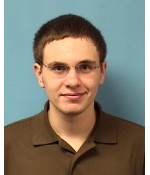 11, traveled to San Juan, Puerto Rico this fall to present a talk on his research at a meeting of the American Chemical Society. Bernard studies halogen bonding in group 14 halomethane analogues with chemistry professor Kelling Donald, using computational chemistry techniques. The two have performed intensive calculations using a supercomputer cluster here at Richmond, and expect to publish their work soon. Bernard is majoring in interdisciplinary physics with a chemistry concentration, allowing him to combine courses from both disciplines.
11, traveled to San Juan, Puerto Rico this fall to present a talk on his research at a meeting of the American Chemical Society. Bernard studies halogen bonding in group 14 halomethane analogues with chemistry professor Kelling Donald, using computational chemistry techniques. The two have performed intensive calculations using a supercomputer cluster here at Richmond, and expect to publish their work soon. Bernard is majoring in interdisciplinary physics with a chemistry concentration, allowing him to combine courses from both disciplines.
Research Update: Calina Copos, '10
Senior physics major 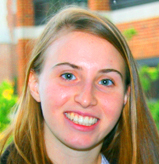 Calina Copos, '10, has been active in research with professor Jerry Gilfoyle, using the Richmond Physics Department’s supercomputer to run computationally intensive simulations to better understand the precision of the experiments they are doing at Jefferson National Laboratory. The two are part of a team working to measure the distributions of electric charge and magnetic field within a single proton. Calina traveled to Hawaii this fall to present the results of her work at a national conference of the American Physical Society’s Division of Nuclear Physics.
Calina Copos, '10, has been active in research with professor Jerry Gilfoyle, using the Richmond Physics Department’s supercomputer to run computationally intensive simulations to better understand the precision of the experiments they are doing at Jefferson National Laboratory. The two are part of a team working to measure the distributions of electric charge and magnetic field within a single proton. Calina traveled to Hawaii this fall to present the results of her work at a national conference of the American Physical Society’s Division of Nuclear Physics.
Research Update: Nick Annichiarico, '12
 Sophomore physics major Nick Annichiarico, '12, has been working with Professor Ted Bunn, studying whether the universe has “handedness.” The two have been studying a database of information on the orientation of galaxies, searching for universal symmetry on a cosmological scale. Nick began working with Professor Bunn during the summer after his freshman year.
Sophomore physics major Nick Annichiarico, '12, has been working with Professor Ted Bunn, studying whether the universe has “handedness.” The two have been studying a database of information on the orientation of galaxies, searching for universal symmetry on a cosmological scale. Nick began working with Professor Bunn during the summer after his freshman year.
Research Update: Jack Shaw, '12
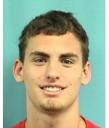 Sophomore physics major Jack Shaw, '12, is currently studying the effects of heat shock on mammalian cells. Jack has been working with Professor Ovidiu Lipan, a biological physicist, since the summer after his freshman year. Their work involves culturing Chinese hamster ovary cells that have been tagged with green fluorescent protein, and is supported in part by a $134,000 grant from the National Science Foundation.
Sophomore physics major Jack Shaw, '12, is currently studying the effects of heat shock on mammalian cells. Jack has been working with Professor Ovidiu Lipan, a biological physicist, since the summer after his freshman year. Their work involves culturing Chinese hamster ovary cells that have been tagged with green fluorescent protein, and is supported in part by a $134,000 grant from the National Science Foundation.
Ben Pauerstein, '12, and Cain Bonniwell, '11, present research in Hawaii

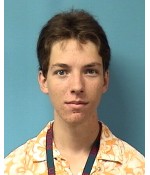 Physics majors Ben Pauerstein, ’12, and Cain Bonniwell, ’11, traveled to Kona, Hawaii this fall to present their research at the national conference of the American Physical Society’s Division of Nuclear Physics. The two are working with Professor Con Beausang, studying nuclear structure in the isotopes Gadolinium156 and Terbium 155.
Physics majors Ben Pauerstein, ’12, and Cain Bonniwell, ’11, traveled to Kona, Hawaii this fall to present their research at the national conference of the American Physical Society’s Division of Nuclear Physics. The two are working with Professor Con Beausang, studying nuclear structure in the isotopes Gadolinium156 and Terbium 155.
New $160,000 supercomputer coming!
Two physics faculty members, Ted Bunn and Jerry Gilfoyle, have just been awarded a $160,000 grant from the National Science Foundation to buy a new supercomputing cluster for their research. Ted and his students will use it to simulate new telescopes that are being designed for observations of the cosmic microwave background radiation. Jerry and his students will use it for simulation and analysis of nuclear physics data from Jefferson Lab.
Both faculty members are excited about the new research directions that this will allow them to explore, and especially about the opportunity for students to be involved with research using cutting-edge supercomputing equipment.